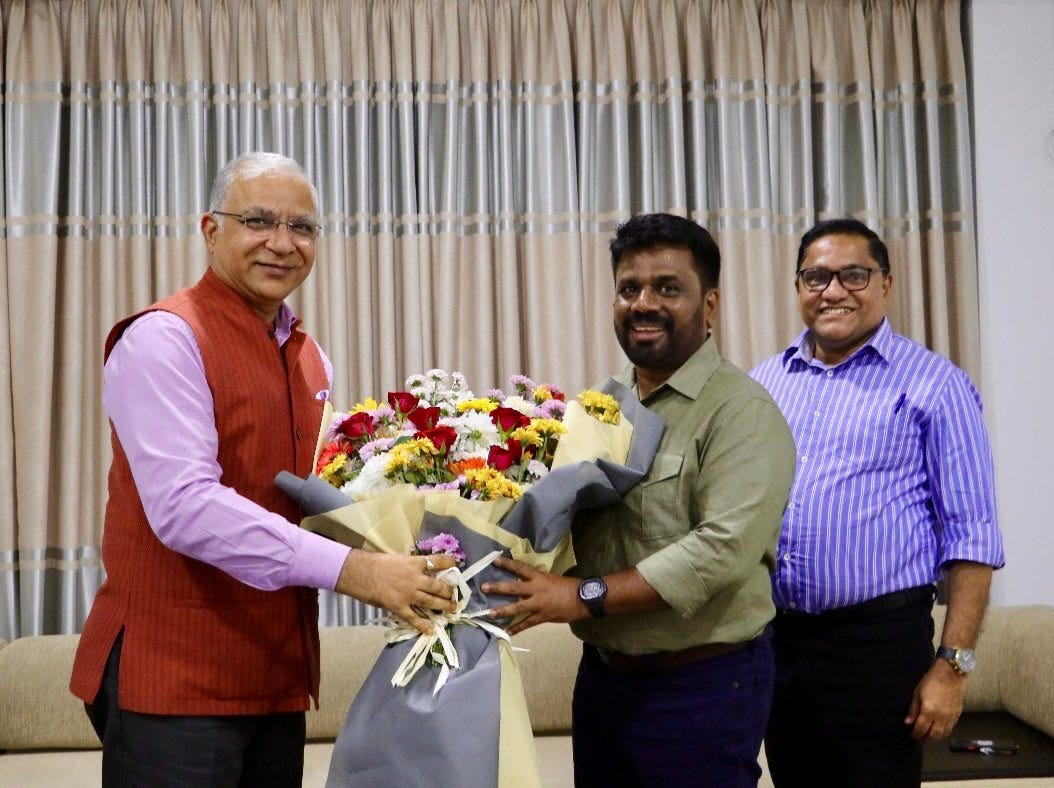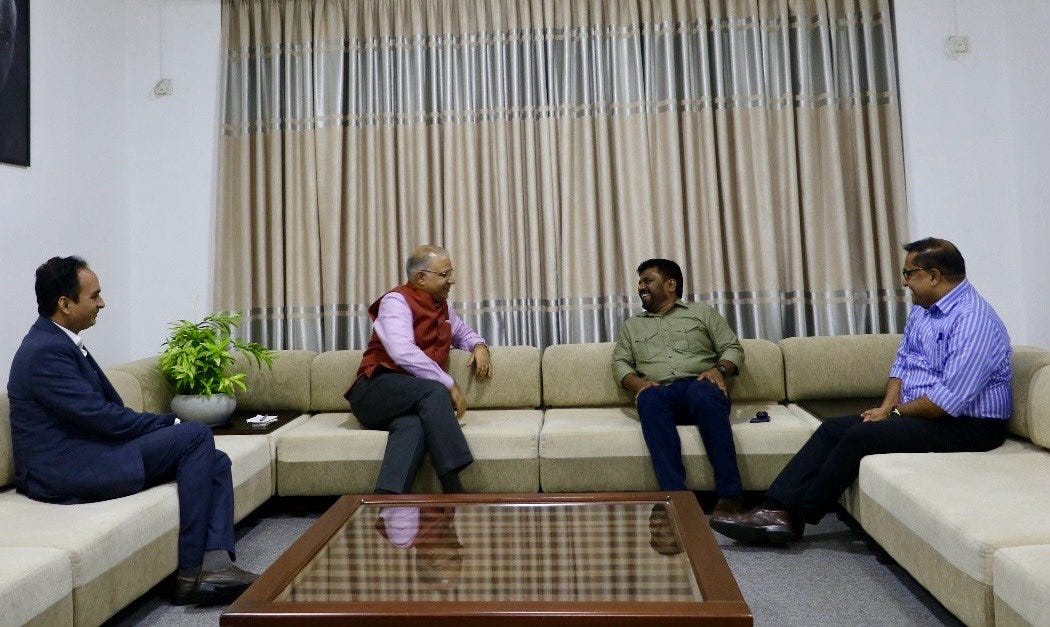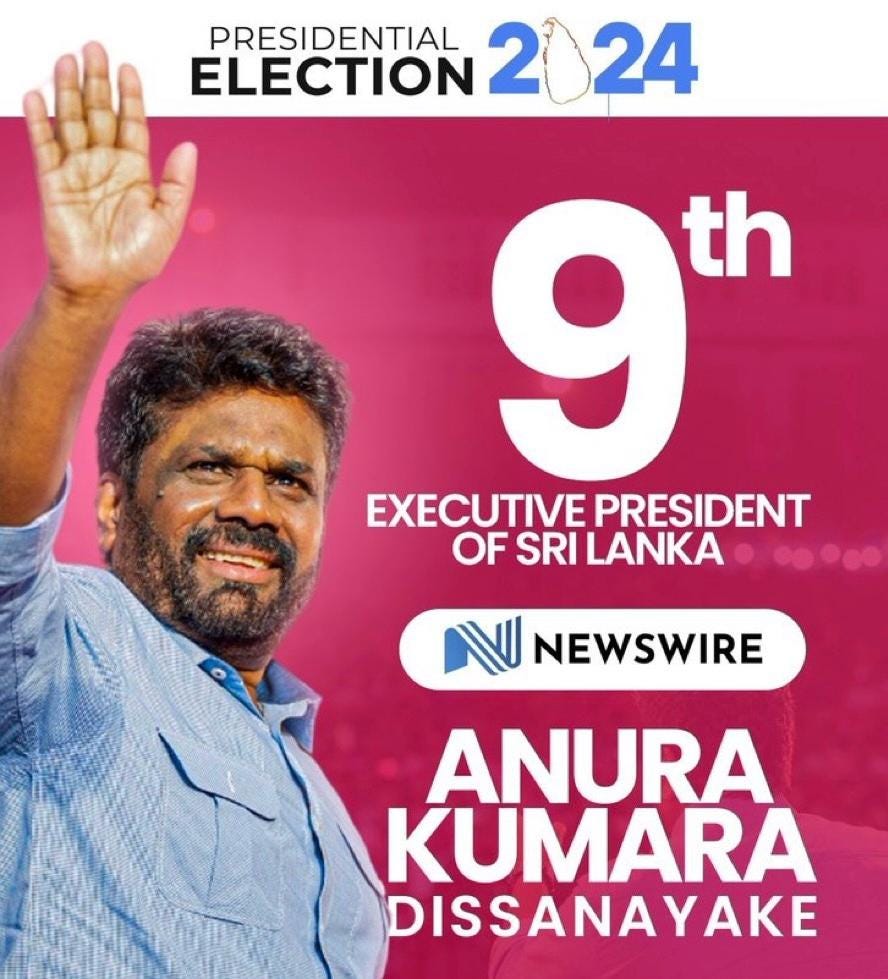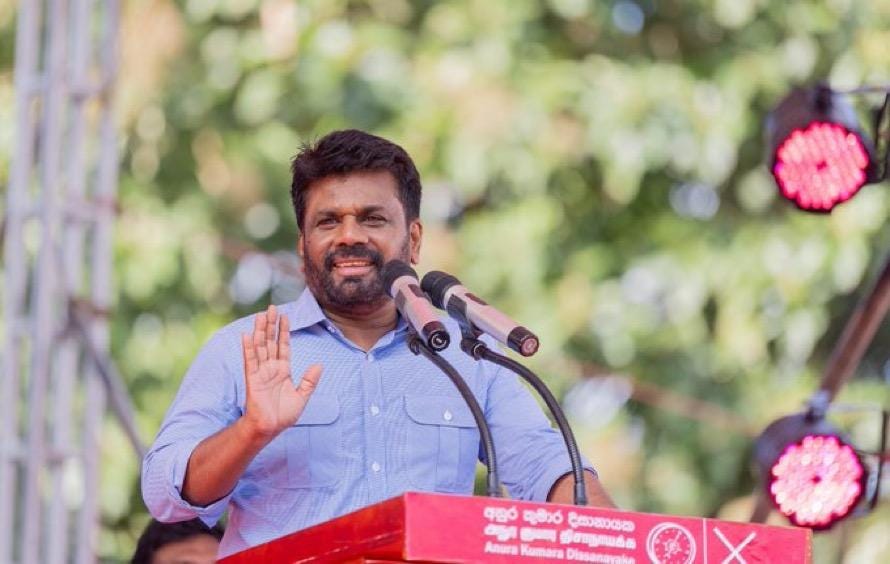
Round 1: Indian Diplomacy Triumphs in Sri Lanka
In the world of international diplomacy, early meetings with newly elected leaders hold significant value. They are often seen as a way for countries to signal their diplomatic priorities and intentions. Under the leadership of Prime Minister Narendra Modi and the deft handling of the Ministry of External Affairs, India has scored a notable diplomatic win by being the first to engage with Sri Lanka’s new president, Anura Kumara Dissanayake.
A Strategic First Move
On September 22nd, the day after Mr. Dissanayake’s victory in the Sri Lankan presidential elections, India's High Commissioner to Sri Lanka was the first foreign envoy to meet him, bouquet in hand. This move was not just symbolic but a critical signal of India's intent to reinforce its influence in Sri Lanka. This early engagement carried significant weight, especially as the newly elected president hails from the Janatha Vimukthi Peramuna (JVP), a party with historically deep ideological ties to China. In the context of ongoing regional rivalries and shifting political allegiances, India’s diplomatic success in securing this first audience was no small feat.
China’s ambassador was close on India’s heels, meeting the new president with similar fanfare, but the order in which these meetings took place is crucial. If Mr. Dissanayake had first engaged with China, it could have been perceived as yet another geopolitical setback for India in its battle for influence in South Asia. However, India’s proactive diplomacy ensured that New Delhi retained its upper hand.
The Historical Context: Sri Lanka’s Shifting Allegiances
Mr. Dissanayake’s rise to power is significant, not just for his individual political journey but because of his party’s Marxist roots and its historical stance against Indian involvement in the region. The JVP has long been wary of what it considered Indian “expansionism.” Yet, over the years, India has strategically worked to mend relations, particularly in the wake of Sri Lanka's economic crisis in 2022. China, once a dominant force in Sri Lanka, has seen its influence wane as the country grapples with a debt crisis largely attributed to Beijing's infrastructure investments. India, on the other hand, has become Sri Lanka’s crucial economic lifeline, providing $4 billion in assistance to stabilise the country.
This assistance played a pivotal role in the downfall of former President Gotabaya Rajapaksa, who had favoured China during his tenure. India’s timely intervention not only helped avert a deeper economic crisis in Sri Lanka but also enabled it to reshape its political engagement with the island nation. The relationship with President Dissanayake is a continuation of that effort, building on earlier diplomatic engagements, including his visit to India in February where he met with External Affairs Minister Subrahmanyam Jaishankar and National Security Advisor Ajit Doval.
India’s Diplomatic Win in a Region Under Pressure
India’s diplomatic victory in Sri Lanka comes at a time when New Delhi has faced challenges in its immediate neighbourhood. In Bangladesh, the sudden ouster of long-time ally Sheikh Hasina as prime minister and the rise of a pro-China leader in Nepal last month have raised concerns about China’s growing influence in South Asia. Additionally, Indian officials have been working hard to repair relations with the president of the Maldives, whose “India Out” platform previously caused friction.
In this complex geopolitical environment, India's swift diplomatic outreach to Mr. Dissanayake sends a clear message: India remains a dominant and stabilising force in South Asia, despite China's strategic moves. Sri Lanka, long seen as a battleground for influence between the two Asian giants, now seems to be leaning towards New Delhi, at least for the moment. The first meeting between India’s High Commissioner and President Dissanayake is not just a ceremonial gesture but a reflection of India’s growing clout in the region, bolstered by financial aid, historical ties, and diplomatic finesse.
Challenges Ahead: Navigating Complex Geopolitical Terrain
While India has every reason to celebrate its diplomatic coup, the future of its relationship with Sri Lanka is far from certain. President Dissanayake’s ties with China cannot be overlooked. He has already pledged to cancel a wind-power project being built by India’s Adani Group, a move that could strain relations with New Delhi. Moreover, his recent meeting with senior officials from the Chinese Communist Party highlights that Sri Lanka is unlikely to distance itself entirely from Beijing’s sphere of influence.
Another potential point of contention is the extension of a moratorium on foreign research vessels in Sri Lankan waters. This ban, originally imposed in response to concerns from India and the United States over Chinese military-linked research vessels, will be a test of Mr. Dissanayake’s balancing act between the competing interests of China and India. Whether Sri Lanka extends this moratorium could be a key indicator of where the country’s allegiances lie.
Summing Up: A Testament to Indian Diplomacy Under PM Modi
India’s early engagement with Sri Lanka’s new leadership is a testament to the country’s diplomatic agility under the stewardship of Prime Minister Modi and External Affairs Minister S. Jaishankar. In a region where the geopolitical landscape is continually shifting, India has managed to secure a vital victory, reinforcing its influence in Sri Lanka at a critical juncture. However, this triumph must be managed with care. The next few months will reveal whether India can maintain its diplomatic edge or whether China will find a way to reclaim lost ground.
For now, India’s diplomats can take pride in their success, but they will need to stay vigilant, as the chessboard of South Asian politics continues to evolve1.
Change of Guard in Sri Lanka: Anura Kumara Dissanayake Wins the Presidential Election
Breaking News: Left-Wing Leader Anura Kumara Dissanayake Wins 2024 Sri Lankan Presidential Election






